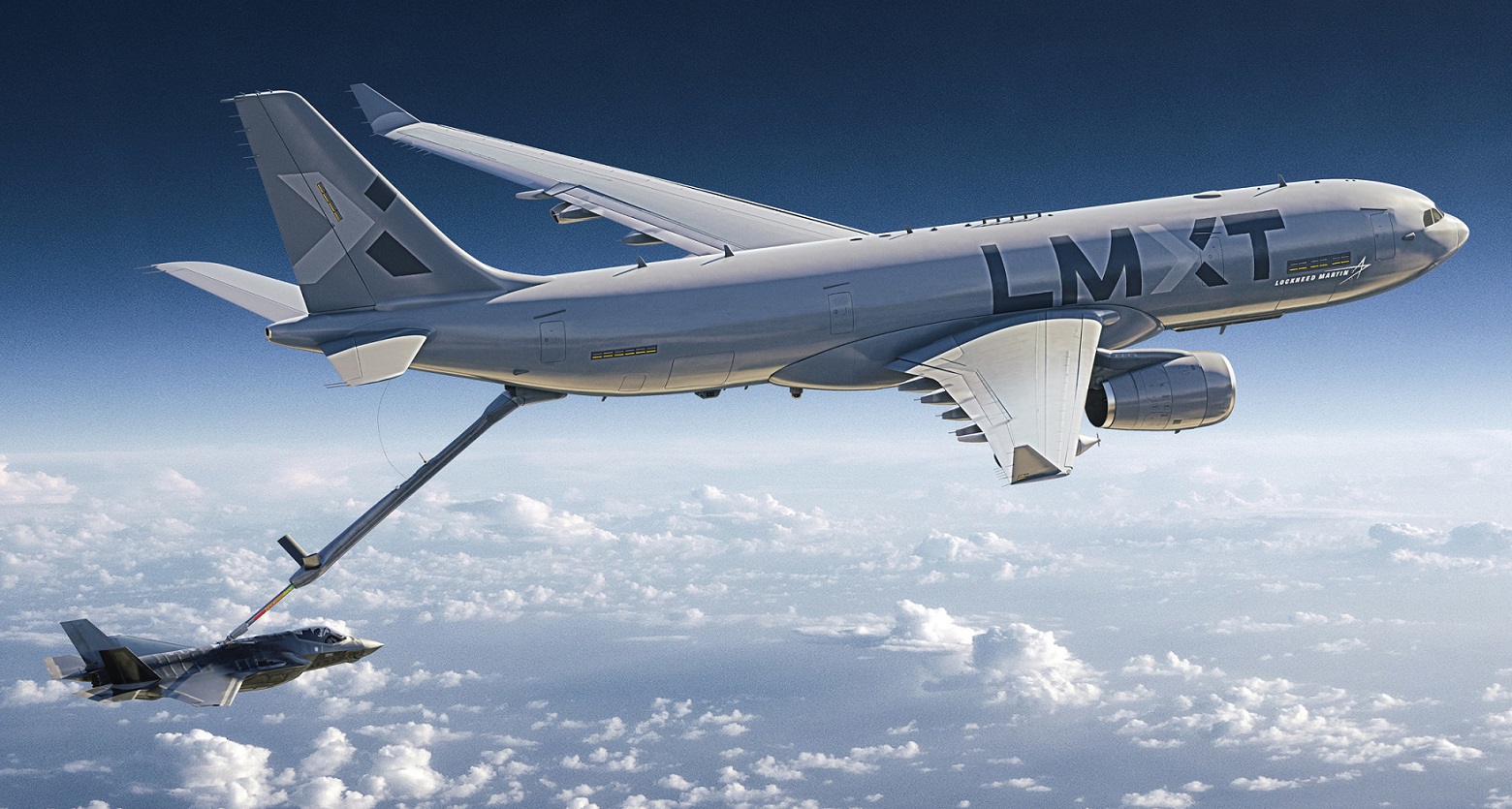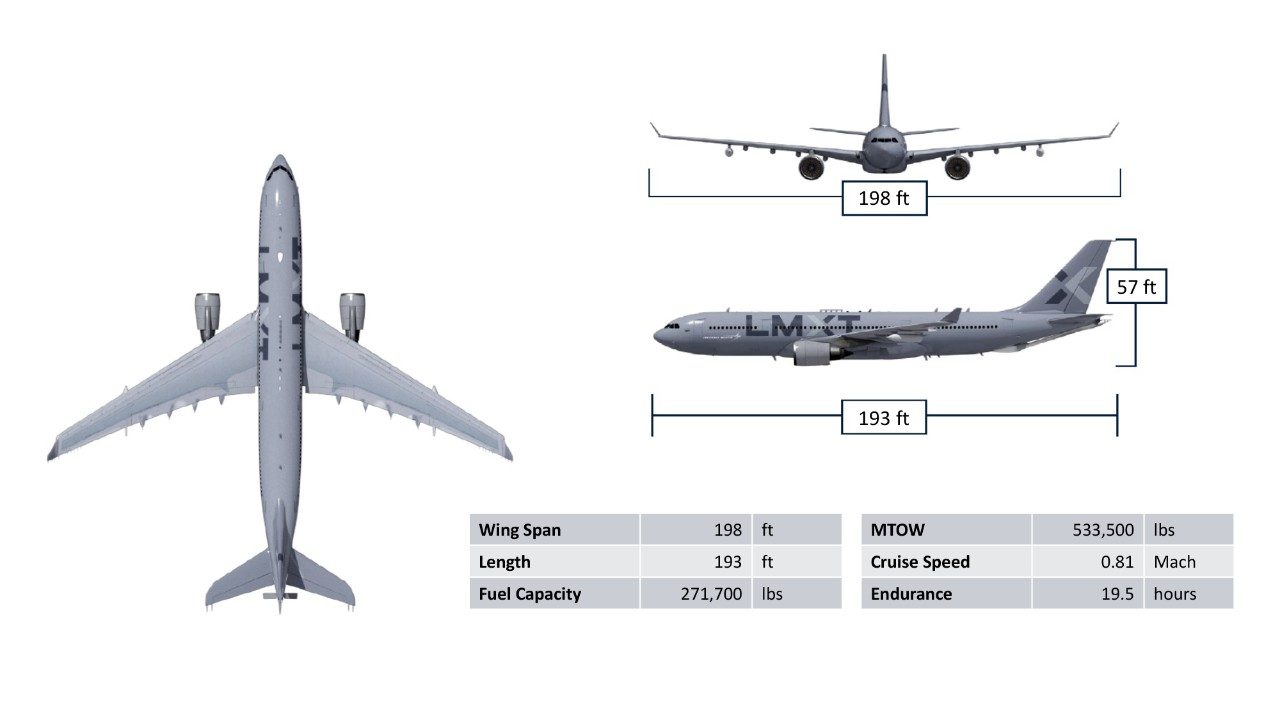U.S. Air Force next-generation LMXT Strategic Tanker
IRIA Staff - February 04, 2022

Modern aircraft engineering has managed to significantly decrease the time that is needed to take off and land a military aircraft. A modern fighter jet can be prepared for take-off within a minutes’ notice. This has allowed the aerial defense to be rapid, effective, and much more responsive. Refueling of modern aircraft, however, still takes around 30 to 45 minutes on the ground, which is a margin that can a determinant factor in a situation of urgency. One way to address this issue is to enhance the aircraft’s capacity to carry more fuel, but it comes at a cost of increased weight that puts significant stress on its performance.
The problem of refueling an aircraft becomes even more intense when the operation is performed on an aircraft carrier setting. Modern aircraft carrier ships although provide a vast area and storage capacity, carrying fuel for all the planes docked at the ship, as well as allocating time slots to each plane for the refueling during the flights can cause a great setback to the ongoing operations. The best way to solve the problem of refueling an aircraft without affecting its performance and without consuming too much of the precious time is to provide airborne refueling capability. The concept of mid-air refueling for modern fighter jets is not new. The practice has been carried out and improved for a long time. The mid-air refueling tankers are getting bigger, better, and much more efficient as they have now become an essential part of a modern Air Force fleet for any country.
It is a proven fact that modern military confrontations would heavily depend upon air supremacy. Whether it is the increasing frictions between NATO and Russia on the Ukraine border or U.S.’s plan to counter China’s increasing influence over the Indo-Pacific region. Superiority in aerial warfare shall play a vital role in determining the outcomes. Although the U.S. and its allies already have an upper hand when it comes to aerial combat technology, airborne refueling capabilities are something that U.S. Air Force (USAF) is still perfecting.
In order to address the mid-air refueling needs, the U.S. Air Force initiated the KC-X program. The KC-X program aimed to procure modern air refueling tanker aircraft through altering the likes of Boeing KC-767 and Airbus A330. USAF KC-X program was significantly successful in providing mid-air refueling tankers that have been successfully tried and tested in a combat environment.
KC-Y would be the next phase of the USAF air refueling tankers procurement program. KC-Y program would be spearheaded by U.S.-based aerospace, arms, and defense manufacturer Lockheed Martin.
 The Lockheed Martin strategic tanker builds on the combat-proven design of the Airbus A330 Multi Role Tanker Transport (MRTT). (Image Credit: Lockheed Martin)
The Lockheed Martin strategic tanker builds on the combat-proven design of the Airbus A330 Multi Role Tanker Transport (MRTT). (Image Credit: Lockheed Martin)
On January 31, Lockheed Martin’s Director of Air Mobility Business Development Larry Gallogly revealed the production plans for the latest LMXT tanker planes. LMXT tankers would be based on Airbus A330-200. The French company Airbus would partner with Lockheed Martin to establish a special assembly line in Mobile, Alabama, as well as Marietta, Georgia, where Lockheed Martin already has an assembly line for its C-130 Hercules line.
While speaking about the establishment of the new assembly line in Marietta, Gallogly stated “We’re really taking advantage of a highly capable, highly experienced workforce in that area”. He also mentioned that Mobile’s access to the port would play an important part in making the procurement process faster and easier.
An undermined number of special A330 planes would be built by Airbus in Toulouse, France. The two sites in the U.S. would build the tankers and military equipment for the planes. Lockheed Martin also plans to produce MRTT (Multi-Role Tanker Transport) version of LMXT tanker planes to cater needs of U.S. allies including Canada and Europe.
According to Lockheed Martin Chairman, President, and CEO James Taiclet, "Establishing this production work in Alabama and Georgia confirms Lockheed Martin's commitment that the LMXT will be built in America, by Americans, for Americans. The LMXT will strengthen global security by enabling our U.S. service members to carry out their most critical missions at extended ranges. At home, the LMXT will strengthen job growth and manufacturing by drawing on the experience and talents of a high-tech American workforce in two states that are proven leaders in aviation."
The LMXT will be built in two phases:
Phase 1: The LMXT is first produced as an A330 airliner at Airbus' Mobile, Alabama, facility, which is where Airbus A320 and A220 commercial airliners are built.
Phase 2: The second phase of the manufacturing process includes converting the commercial aircraft into the LMXT tanker at Lockheed Martin Aeronautics' Marietta, Georgia, facility, which is currently home to the C-130J Super Hercules final production and F-35 Lightning II center wing assembly lines.
While stressing upon the risk minimization, Gallogly mentioned that no ‘used’ A330 airliners would be converted into the LMXT tankers as opening up an airliner and assembling it back into a military aircraft injects a lot of uncertainties and risk.
The U.S. Air Force is expected to procure around 140 to 160 refueling tankers under the KC-Y program to be compatible with its F-22, F-35A, F-16, B1-B, C-17, E-3, A-10, E-7, F-15, and P-8A planes.
The basic airframe for an LMXT tanker would be a slightly modified version of Airbus-A330. In order to be selected as a candidate for Lockheed Martin’s LMXT program, the Airbus-A330 planes were rigorously tested for combat theater environments.
Some basic details about the LMXT tankers are as follows:
 Lockheed Martin LMXT Tanker Specifications. (Image Credit: Lockheed Martin)
Lockheed Martin LMXT Tanker Specifications. (Image Credit: Lockheed Martin)
Although the USAF has still not issued a proper Request for Proposal (RFP) under the KC-Y program, Lockheed Martin anticipates that it would be released by the end of this year. A contract reward is expected to finalize by late 2024 or early 2025, and the deliveries are expected by 2029-2030.
Based on the information provided by Lockheed Martin, the LMXT offers a proven airframe with distinct capabilities designed to meet operator requirements, with advantages that include:
• Enhanced range and fuel offload capacity over current tankers
• A proven fly-by-wire boom currently certified and used by allies to refuel U.S. Air Force receiver aircraft in operations around the world
• The world's first fully automatic boom/air-to-air refueling (A3R) system
• Operational and combat-proven advanced camera and rear vision system
• Open system architecture JADC2 systems
• Established allied interoperability and resilient global supply chain
• A multi-domain operations node that connects the LMXT to the larger battlespace, increasing onboard situational awareness to provide resilient communications and datalink for assets across the force
• A permanently installed aeromedevac suite enabling world-class medical care with intercontinental reach
• Forklift accessible cargo capacity for six military pallets with weights of up to 70 k/lbs. for austere base support
• Unrivaled persistence in the battlespace and operational performance enabling greater access to non-traditional bases
ALSO READ:
Regions
Issues

















 U.S. Navy MQ-25 Stingray Unnamed Refueling Tanker Drone
U.S. Navy MQ-25 Stingray Unnamed Refueling Tanker Drone U.S. to develop new Hypersonic Interceptor System
U.S. to develop new Hypersonic Interceptor System







